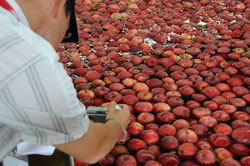 On my first IFAJ tour stop I spoke with our host, Johann Scholler, Steirerfrucht. They are a fresh fruit packing facility. The main product is apples although they also handle pears and other fruit.
On my first IFAJ tour stop I spoke with our host, Johann Scholler, Steirerfrucht. They are a fresh fruit packing facility. The main product is apples although they also handle pears and other fruit.
Apples are the number one fresh fruit choice in Austria. After we left the plant we did visit a couple of different apple farms. We were apparently in between seasons when we were at the plant but they were still washing and packing apples. I’ve got some video of it but that will have to wait until later since I don’t have enough time to upload it.
Johann talked about organic apples since his company believes the market for it is growing. In fact, he says some experts are projecting 10-15% growth for the next 5 to 6 years. Like me, he doesn’t see much difference in organic and non-organic other than an emotional appeal since scientifically there’s not any reason to choose one over the other. But you have to give the consumer what they want.
He did say that “organic” trees produce less fruit and that can allow the fruit to obtain a higher sugar content.
You can listen to my interview with Johann here: ifaj-08-scholler.mp3
IFAJ Congress 2008 Photo Album
AgWired coverage of IFAJ 2008 is sponsored by:  and
and 
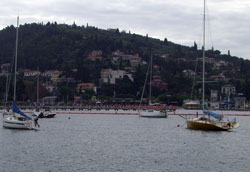 Portoroz is a beautiful little town on the Adriatic coast. The weather changed last night as we came in from Austria and we’ve been getting some light sprinkles all morning.
Portoroz is a beautiful little town on the Adriatic coast. The weather changed last night as we came in from Austria and we’ve been getting some light sprinkles all morning.


 Greeting the IFAJ Congress at our first dinner in Portoroz was the Minister of Agriculture, Forestry and Food, Iztok Jarc. He had a challenge because just prior to our dinner the weather changed completely and we had a drenching lightning storm. It forced the restaurant to make some major adjustments to the settings but finally we got everyone under cover and seated.
Greeting the IFAJ Congress at our first dinner in Portoroz was the Minister of Agriculture, Forestry and Food, Iztok Jarc. He had a challenge because just prior to our dinner the weather changed completely and we had a drenching lightning storm. It forced the restaurant to make some major adjustments to the settings but finally we got everyone under cover and seated.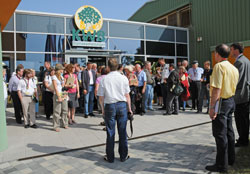 Our first stop on the Tour III group yesterday was KWB, a company that manufactures biomass heating systems. Basically these are various size heaters using wood chips or wood pellets for fuel.
Our first stop on the Tour III group yesterday was KWB, a company that manufactures biomass heating systems. Basically these are various size heaters using wood chips or wood pellets for fuel. On my first IFAJ tour stop I spoke with our host, Johann Scholler, Steirerfrucht. They are a fresh fruit packing facility. The main product is apples although they also handle pears and other fruit.
On my first IFAJ tour stop I spoke with our host, Johann Scholler, Steirerfrucht. They are a fresh fruit packing facility. The main product is apples although they also handle pears and other fruit.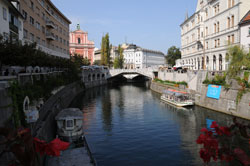 I think this is about the most time I’ve ever had in between posts from an event, including in Japan last year. Cindy and I are in Portoroz, Slovenia doing a little bit of catch up work in our hotel room. We were pretty much in and out of buses all day yesterday traveling down here from Graz, Austria. No time for anything and no internet access.
I think this is about the most time I’ve ever had in between posts from an event, including in Japan last year. Cindy and I are in Portoroz, Slovenia doing a little bit of catch up work in our hotel room. We were pretty much in and out of buses all day yesterday traveling down here from Graz, Austria. No time for anything and no internet access.
 North America’s fertilizer market is increasing their reliance on imported urea. This reliance has caused Lange-Stegmann to step up and meet the challenge of providing high quality urea at reliable fast lead times. Another situation facing the world is finding a reliable and stable nitrogen source. AGROTAIN International is answering that challenge with its new Stabilized Nitrogen Center. This September, Lange-Stegmann will open the nation’s first and largest inland urea import terminal and AGROTAIN International will open the nation’s first urea manufacturing plant using phase modification.
North America’s fertilizer market is increasing their reliance on imported urea. This reliance has caused Lange-Stegmann to step up and meet the challenge of providing high quality urea at reliable fast lead times. Another situation facing the world is finding a reliable and stable nitrogen source. AGROTAIN International is answering that challenge with its new Stabilized Nitrogen Center. This September, Lange-Stegmann will open the nation’s first and largest inland urea import terminal and AGROTAIN International will open the nation’s first urea manufacturing plant using phase modification.
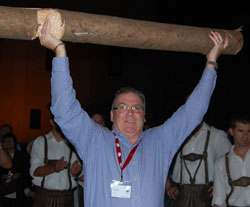 He’s our outgoing IFAJ President and he’s also
He’s our outgoing IFAJ President and he’s also 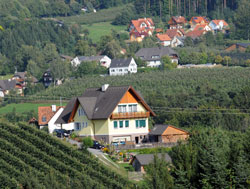 We saw some beautiful countryside today on our tour outside of Graz. There were actually 3 different tours going on simultaneously. Mine focused on specialty crops (make that apples). Cindy went on one focused on biomass and there was one on mountain farming.
We saw some beautiful countryside today on our tour outside of Graz. There were actually 3 different tours going on simultaneously. Mine focused on specialty crops (make that apples). Cindy went on one focused on biomass and there was one on mountain farming.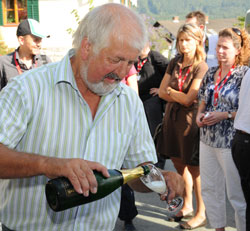 Okay, so I was on the apple tour which included a stop at a fruit packing company and two different apple farms. At our first stop the farmer not only showed us his groves and discussed the various types of apples he grows but he also poured us a glass of wine made from apples. Later on he also poured some stronger apple liquor and even some elderberry wine!
Okay, so I was on the apple tour which included a stop at a fruit packing company and two different apple farms. At our first stop the farmer not only showed us his groves and discussed the various types of apples he grows but he also poured us a glass of wine made from apples. Later on he also poured some stronger apple liquor and even some elderberry wine!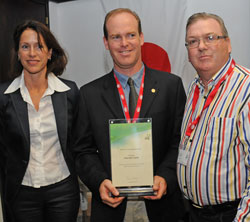 This morning the IFAJ Star prizes for writing and photography were awarded. I don’t think any of the top winners were attending though so we had stand-ins to take their awards home. I’ll try to find a list of them to publish later.
This morning the IFAJ Star prizes for writing and photography were awarded. I don’t think any of the top winners were attending though so we had stand-ins to take their awards home. I’ll try to find a list of them to publish later.